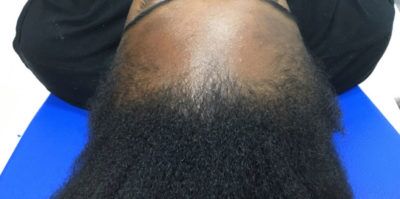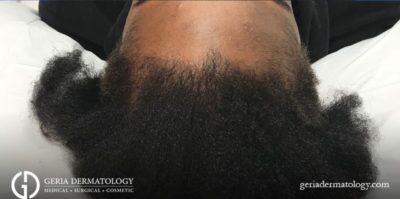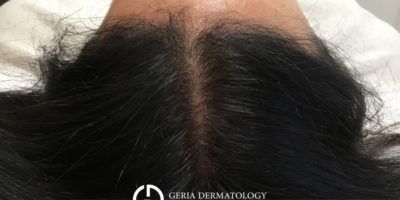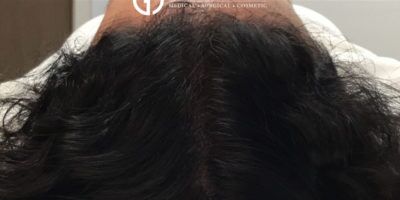What is Hair Loss?
Hair loss (medically referred to as alopecia) affects so many men and women all over the world. It can be temporary or permanent and more commonly affects the scalp, however, your entire body can also show signs of unexpected hair loss. While heredity and aging are the primary factors, baldness can also be affected by hormonal changes or medical conditions.
Some people prefer to let their hair loss run its course, untreated and unhidden, whereas others may try to cover it up with specific hairstyles, hats, and even the “dreaded” toupee. Thankfully, other options can not only stop hair loss but can encourage hair restoration.
What causes Hair Loss?
Hair loss can be caused by health problems, genetics, stress, certain hair products, prescription side effects, and medical complications. Both men and women are affected by hair loss worldwide.
Androgenic alopecia can occur in your late teenage years or twenties. In women, this condition leads to an overall thinning of hair or a widening of the middle part. Men will experience a receding hairline or a bald spot at the top of the head. These symptoms occur due to the inherited genes that cause hair follicles to shrink and eventually stop growing hair.
A number of medications and treatments can cause hair loss. Beta-blockers, blood thinners, antidepressants, anti-inflammatory drugs, and cholesterol-lowering medication can all cause hair loss as a side effect. Thyroid medication and hormone replacement therapy have the same effect.
Treatments like chemotherapy or radiation can also cause hair loss. Chemo and radiation therapy target rapidly growing cells. This process damages hair follicles and makes hair fall out.
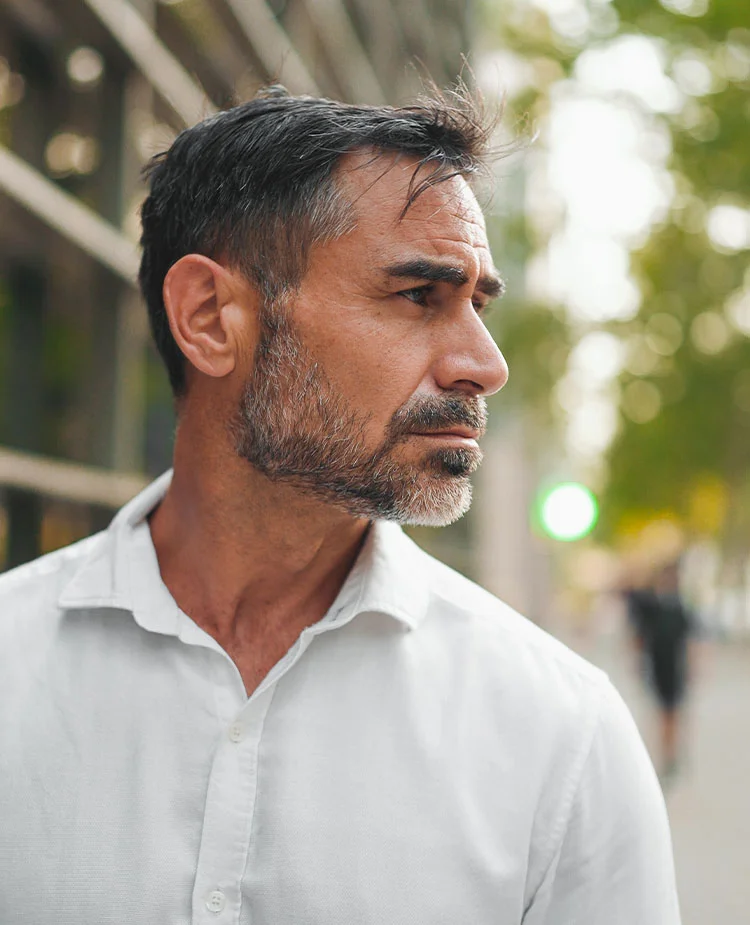
What are common Hair Loss treatments?
PRP HAIR RESTORATION
Platelet-rich plasma (PRP) hair restoration is the preferred treatment for hair loss at Geria Dermatology. This cutting-edge minimally invasive method of hair restoration involves the use of the patient’s own blood to encourage hair growth. The growth factors contained in the blood’s platelets and plasma nourish the follicles.
REVIAN RED
Revian Red is an FDA-approved LED treatment for androgenetic alopecia (also known as androgenic alopecia). This portable wireless cap is paired with an app for mobile devices. It offers comprehensive scalp coverage, unlike LLLT treatments. It is safe for Fitzpatrick Skin Types I to IV.
Revian uses 620 and 660 nm wavelengths of LED energy to restore cells and enhance nitric oxide. This enhances blood flow to supply more nutrients to follicles and extend the anagen growth phase. The treatment also addresses inflammation and blocks dihydrotestosterone (DHT). Initial results may be evident in 8 to 16 weeks.
ORAL MEDICATIONS
Spironolactone (for women): This medication decreases the rate of male sex hormone (androgen) production. For female patients whose hair loss is caused by androgenic alopecia (female-pattern baldness), this androgen decrease improves hair growth and lowers the rate of hair loss. The medication is classified as an aldosterone receptor antagonist, and it takes around six months to a year to create visible results. Patients with medical conditions like hyperkalemia or Addison’s disease may not be suitable for spironolactone.
Finasteride (for men & women): This medication decreases the patient’s level of DHT to slow hair loss and increase hair growth. It should only be used by male or female patients who are experiencing androgenetic alopecia in the center of the scalp and at the crown. It must be used at the same time every day, and results may appear in
Minoxidil
Minoxidil, more commonly known as Rogaine®, is a topical or oral medication that increases new hair growth in cases of hereditary hair loss.
- Topical Minoxidil comes in a solution or foam that is lightly applied to your scalp twice a day. When applying the product, you will need to ensure that your hair and scalp are dry. You do not have to wash your hair before use, however, you will need to wait at least four hours before getting your hair wet after application. Topical Minoxidil is often utilzed as a beginning treatment for patients who are noticing thinning hair.
- Oral Minoxidil is a “low” dosage daily tablet. This treatment is best used for patients who haven’t seen any results from their topical treatment after six months of diligent use or are experiencing side effects such as rashes, irritation, or allergies. Some patients have also noticed that topical Minoxidil can lead to poor hair texture that is dry and tangled hair leaving it prone to breakage.
Minoxidil should be avoided if you have:
- Drug allergy
- Pheochromocytoma (a rare type of tumor)
- Pulmonary hypertension with mitral stenosis (increased pulmonary artery pressure)
- Severe hepatic impairment (liver failure)
- Angina or recent myocardial infarction (heart attack)
- Left ventricular hypertrophy
- Heart failure
Please keep in mind Minoxidil will NOT work faster if used more than instructed. For best results, you are strongly advised to follow the directions our team provides you. You should be able to see some positive results within three to six months.
Exosomes
Exosomes are extracellular vesicles (meaning they exist outside of cells) produced by Mesenchymal Stem Cells (MSC) that are involved in cell communication. The signals that these exosomes produce can interact with other cells to trigger beneficial behavior changes. Since exosomes are smaller and more nimble, they can travel throughout the bloodstream to carry multiple doses of proteins across barriers that were previously inaccessible to cells. Using more than 200 signaling proteins, the transfer of genetic information to cells within damaged tissues is possible and promotes survival and regeneration within the tissue cells.
When used on the scalp, exosomes can promote hair follicle growth, which will eventually lead to hair regrowth. MSC-derived exosomes contain angiogenic growth factors and other molecules that can promote the growth of new blood vessels, which are essential for the nourishment of hair follicles.
KeraLase™
KeraLase is a therapy that promotes hair development and improves scalp health by creating an environment favorable to hair growth without using micro-needle rollers. This treatment uses a combination of Lutronic LaseMD (a laser that produces non-ablative micro-channels) and the KeraFactor® serum, which is a mixture of five growth factors, stem cells, and other scalp proteins. These highly concentrated levels of growth hormones and proteins can boost hair growth and affect all 4 stages of the hair life cycle.
During your treatment, which lasts about only five minutes, the Lutronic LaseMD® laser is administered to the entire scalp to optimize the absorption qualities of the scalp and prepare your skin for the KeraFactor serum, by opening the channels of the hair follicles so they can better absorb the serum. You can expect treatments every four weeks for six treatment sessions, followed by maintenance therapy consisting of one treatment every three months. You should be able to see continual improvement for 12 to 18 months after treatment.
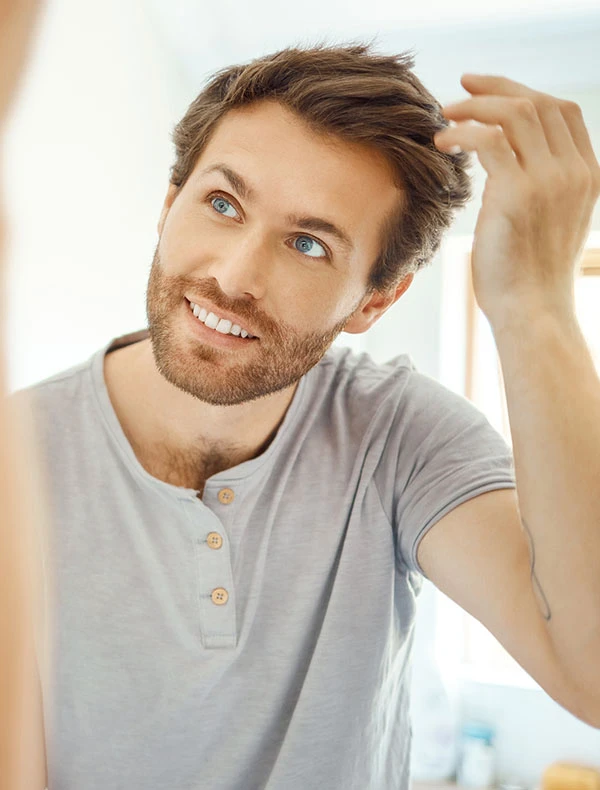
Hair Loss treatment recovery
Hair loss restoration is not a quick fix, but with commitment and diligence, patients can often regain a significant portion of their head of hair. While each individual patient and their chosen treatment will have their own results timeline, the typical hair regrowth cycle usually requires around 4-6 months for the hair to become visibly thicker in the targeted areas. Don’t be discouraged if you find that you are “shedding” hair after a few months of treatment, as this is completely normal and is a result of your new hair follicles pushing out the old ones.
Below is a rough timeline you can expect from each treatment offered at Geria Dermatology:
- PRP Hair Restoration: The recommended treatment is 3-5 sessions spaced 4-6 weeks apart depending on your response and the degree of your hair thinning. New hair growth can be seen as early as 2 months but is typically evident between 6-8 months and will continue to improve up to a year after
- REVIAN Red: Treatments should be performed for about 10 minutes per day to provide complete coverage and the effective dosage. After about 16 weeks, patients should begin to see greater than 80% hair growth compared to those using finasteride, and 30% more than those who combine their treatment with our oral medications.
- Oral Medication: When treating hair loss with oral medication, it will take a while to begin showing results, so please don’t be discouraged if you don’t see improvement right away.
- Spironolactone: Most patients will require at least six months of routine consumption before results become evident, however, some women may not notice any benefits until they’ve taken the pill for at least a year. After six months and depending on the results, your provider may recommend a dosage increase to produce better results.
- Finasteride: After about three months of taking Finasteride, there should be some noticeable improvements, especially in the “crown” area. Around six months of taking the pill, our male patients can begin seeing more abundant and denser hair, but will still have areas of visible scalp. The best results will occur about a year after following our instructions and patients should have a clearer idea of their final results.
During the course of treatment, you will need to avoid using products that can harm your hair, such as dyes, chemical relaxers, or chemical straighteners. Not using these products can help your hair growth treatment work more effectively.
Please keep in mind that not all hair loss can be reversed, but can be managed if you follow our teams’ instructions.
How much?
How much does Hair Loss Treatment cost in New Jersey?
The cost of a hair loss Treatment in New Jersey differs based on your needs and requirements, among a few other factors. We recommend that you schedule your consultation at the earliest to receive a customized quote that can offer you the most cost-efficient treatment.
Why choose us?
Why choose
Geria Dermatology?
Our founder, Aanand N. Geria, MD FAAD is a board-certified dermatologist specializing in medical, surgical, and cosmetic dermatology. Dr. Geria is a Fellow of the American Academy of Dermatology (AAD), a Diplomate of the American Board of Dermatology (ABD), and a member of the American Society of Dermatologic Surgery (ASDS), New Jersey Dermatological Society (DSNJ), and Skin of Color Society, and has frequently made the Castle Connolly “Top Doctors” list since 2018.
Our Dermatologists and talented team of clinicians have undergone extensive training and developed the necessary skills to treat patients of all backgrounds. Our goal is to exceed our patients’ expectations while establishing ourselves as the premier hair loss treatment practice in the New Jersey area.
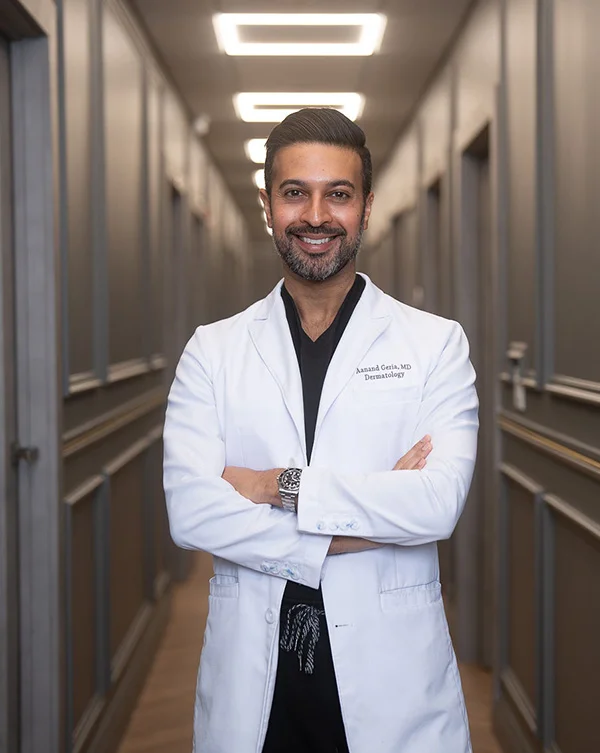

Contact us
Dedicated To Exceptional Services
We are available to help recommend the best treatment option to address hair loss for New Jersey patients. If you would like to schedule a consultation, contact Geria Dermatology today.

